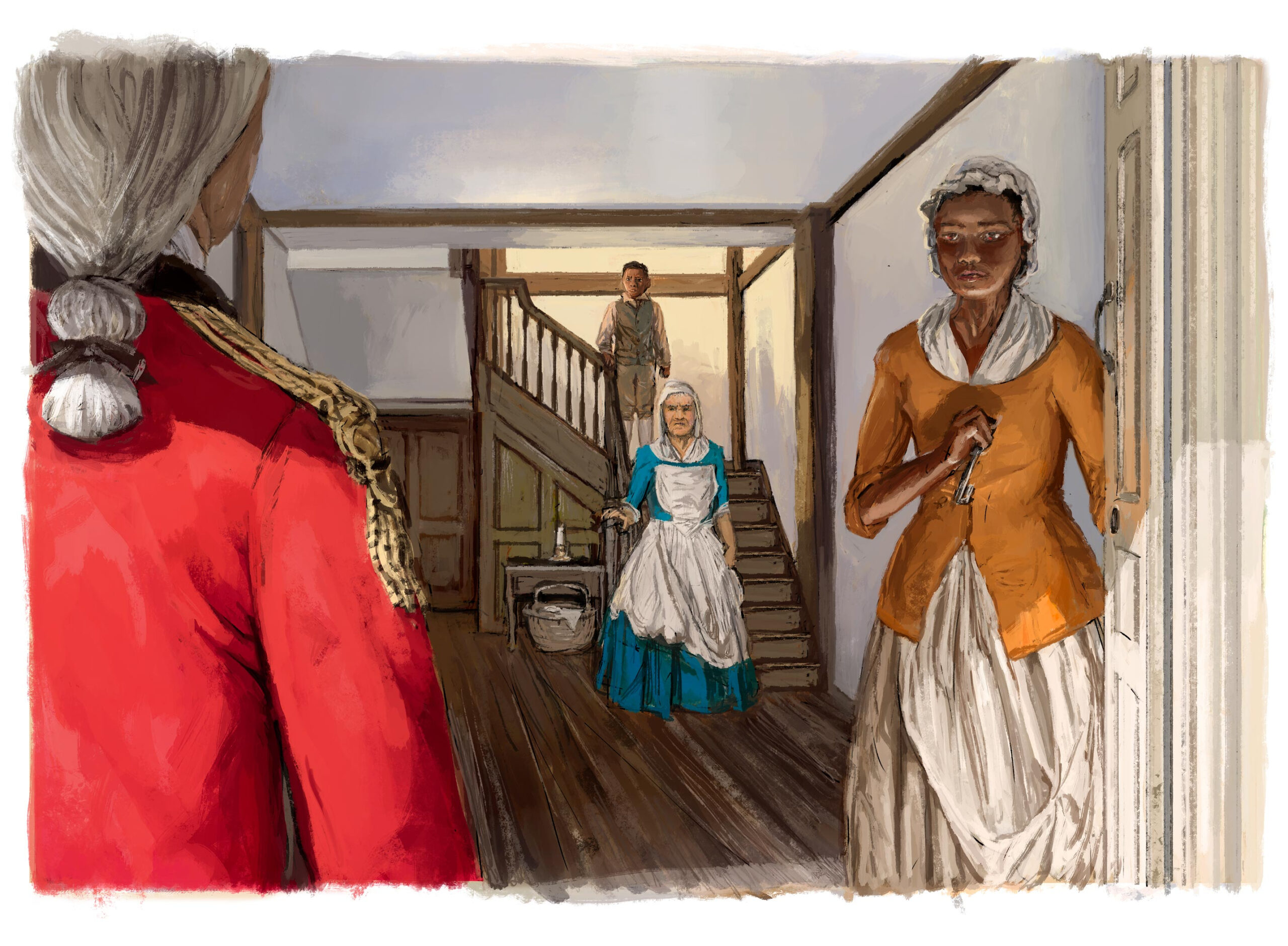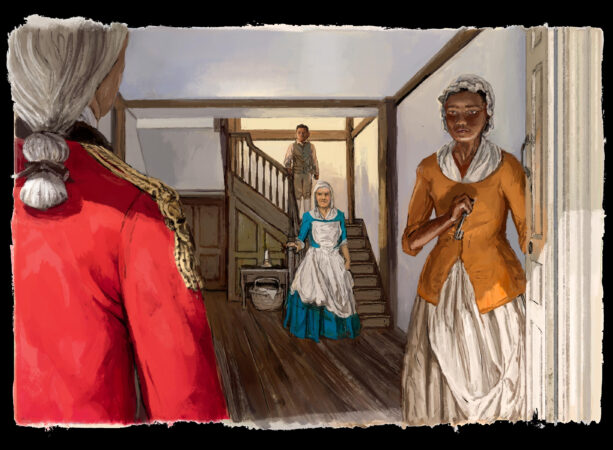On June 26, 1778, British troops, under the command of Lieutenant General Sir Henry Clinton, first arrived in Monmouth Court House, now known as Freehold Township. With France entering the American Revolution on the side of the Patriots, the British wanted to consolidate their forces within their strongholds in New York City and in the southern states, and so had evacuated Philadelphia on June 18, 1778. Wealthy Loyalists and officers’ families traveled by Royal Navy ships, leaving Clinton’s army to then march on foot across enemy territory in New Jersey to reach safety.
Some members of the Loyalist units fighting for the king were former residents of Monmouth County. In the months after fighting broke out between Americans and the British in 1776, Patriots and Loyalists in Monmouth County took turns confiscating property, conducting raids, and clashing in every way possible. Freehold initially had a number of prominent and active Loyalists among its residents who briefly controlled the village. Continental Army troops eventually broke up the Loyalists in the area, forcing many to flee to Sandy Hook, which the British controlled for the entirety of the Revolution. The area around the Sandy Hook Lighthouse was a tent city that became known as Refugeetown. Former wealthy landowners and ordinary townspeople alike lived there, as did runaway slaves, Continental Army deserters, and their families.
Clinton’s men, having evacuated Philadelphia, proceeded through Haddonfield, Mount Holly, and Moorestown before reaching Allentown in Monmouth County on June 24. The following day they headed to Monmouth Court House.
The British had endured harsh conditions on their trek. Mosquitoes, blistering heat and humidity, constant harassment by local militia, and traversing swamps and morasses left the troops exhausted. Upon reaching the high grounds around Freehold they stopped for a brief rest in advance of the completion of their mission.
From this point, Clinton’s army was 12 miles away from the heights of Middletown–a day’s march. This high ground was essentially unassailable, and once there, the soldiers would have an easy time making the final trip down to Sandy Hook to board boats to New York.
Instead, Clinton remained in Freehold for two full days. His correspondence clearly indicates he felt the men needed rest. But he also was receiving constant intelligence and updates from Loyalists across the state who were keeping an eye on George Washington’s units as they began to converge on Freehold. Clinton had enjoyed great success against Washington in 1777, and no one on either side doubted the British were the more experienced and vastly superior fighting force.
Locals in Monmouth County had known that Clinton’s army was on the march, and when they reached Allen’s Town, residents who lived along the main roads took whatever steps they could to protect themselves and their possessions. Those who had a place to go fled and took their valuables with them. Others hid their silver and other goods in wells or buried them in the woods. Livestock was driven into the pinelands to be recovered later. But not everyone could leave, and some who could chose not to. Elizabeth Covenhoven was one example of the latter.

She knew that she lived in perhaps the finest house in the area, and so was not surprised when Henry Clinton showed up at her door and announced that he would be staying and if they didn’t want the house put to the torch, they would do as they were told and cause no trouble.
Elizabeth was forced to sleep in the milk room and after the war filed a claim with the state for the extensive damage to her house and property by the British.
But, thanks to her choices, her home was spared, and has survived to this day, now one of four historical homes owned and operated by the Monmouth County Historical Association. Covenhoven House currently hosts an exhibit called “Choices” which explores the life and times of Elizabeth Covenhoven, the choices she made at such a tense and dangerous time, and what happened next.
Sources:
Bilby, Joseph G., & Jenkins, Katherine Bilby. (2019). Monmouth Court House: The Battle That Made the American Army. Westholme Publishing, Yardley, Penn.
Fabiano, John, et.al. (2006) A Short History of Allentown. The Allentown Village Initiative, Allentown, N.J Available: https://www.allentownvinj.org/a-short-history.html.
Griffith, William R. (2020). A Handsome Flogging: The Battle of Monmouth, June 28, 1778. Savas Beatie, El Dorado Hills, Calif.
Lender, Mark E., & Stone, Garry W. (2016). Fatal Sunday. University of Oklahoma Press, Norman, Okla.
Morrissey, Brendan. (2004). Monmouth Courthouse 1778: The Last Great Battle in the North. Bloomsbury Publishing USA, New York, N.Y.
Smith, Samuel S. (1975). The Battle of Monmouth. Pamphlet published January 1, 1975, New Jersey Historical Commission.
Stryker, William S. (William Scudder)> (1970). The Battle of Monmouth. Kennikat Press, Port Washington, N.Y.


Leave a Reply